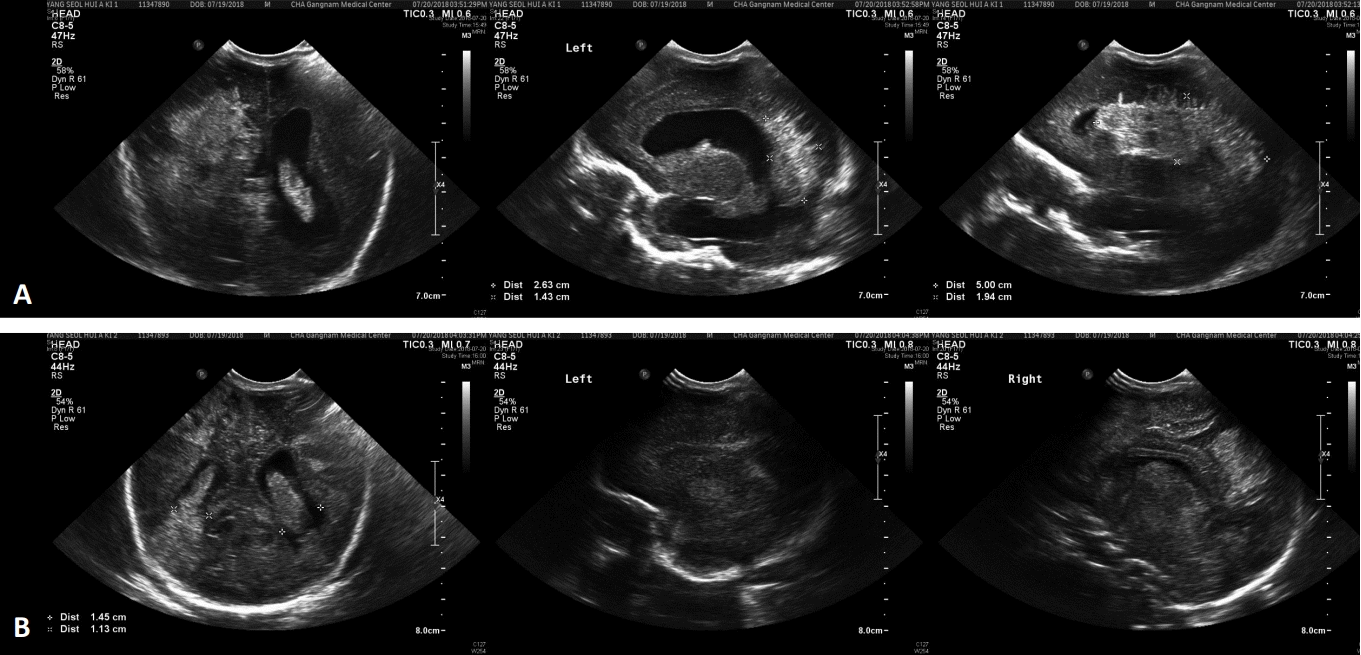1. Menendez Hernando C, Chacon Aguilar R, Farinas Salto M, Perez Crespo R, Martin Molina R, Moreno Novillo R, et al. Severe neonatal anemia due to fetomaternal hemorrhage: an ilustrative case. Arch Argent Pediatr. 2019; 117:e142–6.
2. Solomonia N, Playforth K, Reynolds EW. Fetal-maternal hemorrhage: a case and literature review. AJP Rep. 2012; 2:7–14.
3. Ahmed M, Abdullatif M. Fetomaternal transfusion as a cause of severe fetal anemia causing early neonatal death: a case report. Oman Med J. 2011; 26:444–6.
4. Weisberg L, Kingdom J, Keating S, Ryan G, Seaward G, Kelly E, et al. Treatment options in fetomaternal hemorrhage: four case studies. J Obstet Gynaecol Can. 2004; 26:893–8.
5. Den Besten G, van der Weide K, Schuerman FA, Michael Cotten C, Rondeel JM. Establishing the cause of anemia in a premature newborn infant. Lab Med. 2018; 49:e74–7.
6. Thomas A, Mathew M, Unciano Moral E, Vaclavinkova V. Acute massive fetomaternal hemorrhage: case reports and review of the literature. Acta Obstet Gynecol Scand. 2003; 82:479–80.
7. Doshi K, Shastry S, Shivhare A, Raturi M. Cellular mimicry in Kleihauer-Betke assay. Glob J Transfus Med. 2016; 1:85–7.
8. Duguid JK, Bromilow IM. Laboratory measurement of fetomaternal hemorrhage and its clinical relevance. Transfus Med Rev. 1999; 13:43–8.
9. Stefanovic V. Fetomaternal hemorrhage complicated pregnancy: risks, identification, and management. Curr Opin Obstet Gynecol. 2016; 28:86–94.
10. Scientific subcommittee of the Australian & New Zealand Society of Blood Transfusion Inc. Guidelines for laboratory assessment of fetomaternal haemorrhage. Sydney: The Society;2002. p. 1–14.
11. Kim YA, Makar RS. Detection of fetomaternal hemorrhage. Am J Hematol. 2012; 87:417–23.
12. Choi JW, Oh JH, Seok JE, Lee YJ, Oh YK. A case of matemal hemorrhage. J Korean Soc Neonatol. 1999; 6:272–5.
13. Kim HK, Choi MY, Yoon HS, Yun BY, Bae SW, Son DW. Clinical study on massive fetomaternal hemorrhage. Korean J Perinatol. 2001; 12:267–73.
14. Lee CH, Kim JK, Han MK, Kim JW, Lee JJ. Two cases of massive fetomaternal hemorrhage treated by exchange transfusion. Korean J Perinatol. 2008; 19:203–8.
15. Park HC, Park SK, Choi MS. Neonatal severe anemia due to massive fetomaternal hemorrhage. Perinatology. 2019; 30:40–5.
16. Giacoia GP. Severe fetomaternal hemorrhage: a review. Obstet Gynecol Surv. 1997; 52:372–80.
17. Maier JT, Schalinski E, Schneider W, Gottschalk U, Hellmeyer L. Fetomaternal hemorrhage (FMH), an update: review of literature and an illustrative case. Arch Gynecol Obstet. 2015; 292:595–602.
18. Stroustrup A, Plafkin C. A pilot prospective study of fetomaternal hemorrhage identified by anemia in asymptomatic neonates. J Perinatol. 2016; 36:366–9.
19. Verco CJ, Jones WR. Monoamniotic twin pregnancy complicated by massive fetal-maternal haemorrhage. Aust N Z J Obstet Gynaecol. 1981; 21:186–7.
20. Watanabe N, Jwa SC, Ozawa N, Sago H. Sinusoidal heart rate patterns as a manifestation of massive fetomaternal hemorrhage in a monochorionic-diamniotic twin pregnancy: a case report. Fetal Diagn Ther. 2010; 27:168–70.





 PDF
PDF Citation
Citation Print
Print



 XML Download
XML Download